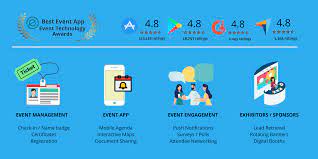The Rise of Webcast Platforms: Revolutionizing the Way We Connect
In today’s digital age, the demand for efficient and seamless communication has never been higher. Whether it’s for business meetings, conferences, or educational purposes, the need to connect with people around the world in real-time is crucial. This is where webcast platforms come into play, revolutionizing the way we connect and collaborate.
A webcast platform is a powerful tool that enables individuals or organizations to broadcast live events, presentations, or discussions over the internet. It provides a virtual space where participants can join remotely from anywhere in the world, eliminating geographical barriers and allowing for global connectivity.
One of the key advantages of webcast platforms is their ability to reach a large audience. Unlike traditional physical events that are limited by venue capacity, webcasts can accommodate an unlimited number of participants. This opens up opportunities for businesses to engage with a broader audience base and extend their reach beyond what was previously possible.
Furthermore, webcast platforms offer interactive features that enhance engagement and participation. Attendees can ask questions, participate in polls or surveys, and even interact with other participants through chat functions. This level of interactivity fosters a sense of community and collaboration among attendees, despite being physically distant.
Another significant benefit of webcast platforms is their flexibility and convenience. Participants can join from any device with an internet connection – be it a computer, tablet, or smartphone. This accessibility ensures that everyone can attend regardless of their location or time zone, making it an ideal solution for global conferences or training sessions.
Moreover, webcasts provide valuable analytics and data insights that can help organizers measure the success of their events. They can track attendance rates, engagement levels, viewer demographics, and more. These analytics enable businesses to refine their strategies and tailor future events based on audience preferences and behaviors.
Security is also a top priority for webcast platforms. With advanced encryption technologies and secure access controls, organizers can ensure that their content remains protected and accessible only to authorized participants. This level of security is essential, especially when dealing with sensitive or confidential information.
In conclusion, webcast platforms have revolutionized the way we connect and collaborate in today’s digital world. They offer a flexible, interactive, and convenient solution for hosting live events and engaging with a global audience. With their advanced features and analytics capabilities, webcast platforms empower businesses to create impactful virtual experiences while maximizing reach and engagement.
As technology continues to evolve, we can expect webcast platforms to become even more sophisticated, providing an immersive and seamless virtual experience that rivals traditional physical events. The future of communication is undoubtedly being shaped by webcast platforms, enabling us to connect with others in ways we never thought possible before.
8 Essential Tips for Choosing a Webcast Platform
- Choose a platform that is easy to use and navigate.
- Ensure the platform offers reliable streaming quality with minimal latency.
- Make sure the platform has features such as screen sharing, video conferencing, and chat capabilities.
- Ensure the platform is secure and compliant with data privacy regulations such as GDPR or CCPA.
- Consider the cost of using the webcast platform before selecting one for your needs.
- Check if there are any limitations on bandwidth or storage capacity when using a particular webcast platform for your event or broadcast needs.
- Test out different platforms ahead of time to ensure they meet your requirements and expectations for a successful webcast experience for your viewers/attendees/participants/etc..
- Ensure you have adequate support from the webcasting provider in case of technical difficulties during an event or broadcast session
When it comes to selecting a webcast platform, one crucial tip to keep in mind is to choose a platform that is easy to use and navigate. The user experience plays a significant role in the success of your webcast, as it directly impacts how smoothly participants can join and engage with your event.
Opting for a user-friendly webcast platform ensures that both organizers and attendees can navigate through the interface effortlessly. Look for platforms that offer intuitive layouts, clear instructions, and straightforward controls. This way, even those who are not tech-savvy will feel comfortable using the platform.
A simple and well-designed interface reduces the learning curve for participants, allowing them to focus on the content of your webcast rather than struggling with technical difficulties. It enhances their overall experience and encourages active participation.
Moreover, an easy-to-use platform saves time during event setup. Organizers can quickly set up their webcasts without getting lost in complex configurations or spending excessive time troubleshooting issues. This enables them to focus on content creation and other essential aspects of event planning.
Additionally, consider the accessibility of the platform across different devices. Ensure that it is compatible with various operating systems and browsers so that participants can join from their preferred devices without any compatibility issues.
Choosing a user-friendly webcast platform not only benefits attendees but also streamlines your workflow as an organizer. It allows you to create engaging events with minimal technical hurdles, ensuring a seamless experience for everyone involved.
In conclusion, when selecting a webcast platform, prioritize ease of use and navigation. A user-friendly interface will enhance participant engagement, simplify event setup, and contribute to an overall positive experience for both organizers and attendees. So take your time to explore different platforms before making a decision, keeping usability at the forefront of your considerations.
When it comes to hosting a successful webcast, one of the most crucial factors to consider is the streaming quality and latency of the platform you choose. In today’s fast-paced digital world, where attention spans are short and expectations are high, ensuring a seamless and reliable streaming experience is paramount.
Reliable streaming quality refers to the ability of the webcast platform to deliver a smooth and uninterrupted stream of audio and video content. Nothing frustrates viewers more than constant buffering, freezing screens, or distorted audio. These issues not only disrupt the flow of the event but also diminish the overall user experience.
Additionally, minimal latency is equally important. Latency refers to the delay between when something happens in real-time and when it is seen or heard by viewers on their devices. High latency can lead to awkward delays in interactions, making conversations feel disjointed and unnatural. It can also hinder real-time engagement features like polls or Q&A sessions.
To ensure a positive user experience and engagement during your webcast, it’s essential to choose a platform that prioritizes reliable streaming quality with minimal latency. Look for platforms that use robust content delivery networks (CDNs) to distribute your stream efficiently across multiple servers worldwide. CDNs help minimize buffering by reducing the distance between viewers and content servers.
Furthermore, consider platforms that offer adaptive bitrate streaming (ABR). ABR adjusts video quality based on each viewer’s internet connection speed, ensuring smooth playback regardless of varying network conditions. This feature guarantees that viewers with slower connections can still enjoy your webcast without interruptions.
Before committing to a webcast platform, thoroughly test its streaming capabilities. Run trial broadcasts or demos to assess how well it handles different internet speeds and devices. Pay attention to any buffering issues or delays during these tests as they may indicate potential problems during your actual event.
In conclusion, choosing a webcast platform that offers reliable streaming quality with minimal latency is vital for hosting successful virtual events. By prioritizing a seamless and uninterrupted streaming experience, you can ensure that your audience remains engaged and connected throughout the webcast. So, take the time to research and test different platforms to find the one that best meets your streaming needs.
When choosing a webcast platform, there are several key features that you should consider to ensure a successful and engaging virtual experience. Among these features, screen sharing, video conferencing, and chat capabilities are essential for effective communication and collaboration.
Screen sharing is a valuable feature that allows presenters to share their computer screens with participants. This feature enables seamless demonstrations, presentations, or showcasing of content. Whether it’s displaying slides, videos, or software demonstrations, screen sharing enhances the visual aspect of your webcast and ensures that everyone is on the same page.
Video conferencing is another crucial feature that brings a human touch to virtual events. It allows participants to see each other through live video feeds, creating a more personal and interactive experience. Video conferencing fosters engagement and helps build connections among attendees who may be physically distant but can still see and interact with one another in real-time.
Chat capabilities provide an additional layer of interaction during webcasts. Participants can engage in text-based conversations by asking questions, sharing insights, or discussing topics related to the event. Chat features encourage active participation from attendees who may feel more comfortable expressing themselves through writing rather than speaking up during a live session.
By incorporating these features into your chosen webcast platform, you can create an immersive and collaborative environment for your audience. Screen sharing facilitates clear communication of ideas or concepts, video conferencing adds a personal touch to interactions, and chat capabilities encourage engagement from participants.
Before selecting a webcast platform, ensure that these features are available and user-friendly. Test them out beforehand to make sure they meet your specific needs and align with the goals of your event. A platform that combines screen sharing, video conferencing, and chat capabilities will enable you to deliver impactful presentations while fostering meaningful connections among your participants.
Remember that choosing the right webcast platform with these essential features is key to hosting successful virtual events where communication flows seamlessly and engagement levels soar.
When it comes to choosing a webcast platform, one crucial tip to keep in mind is ensuring the platform’s security and compliance with data privacy regulations. With the increasing emphasis on data protection and privacy, it is essential to select a platform that prioritizes these aspects.
Data privacy regulations such as the General Data Protection Regulation (GDPR) in Europe or the California Consumer Privacy Act (CCPA) in the United States have been implemented to safeguard individuals’ personal information. These regulations outline strict guidelines on how organizations handle, store, and process data.
By selecting a webcast platform that is compliant with these regulations, you can rest assured that your attendees’ personal information will be handled securely and in accordance with legal requirements. This includes obtaining proper consent for data collection, implementing robust security measures to protect against unauthorized access or breaches, and providing transparency regarding data usage.
A secure webcast platform should utilize encryption technologies to safeguard sensitive information transmitted during live events. Additionally, it should have secure access controls in place to ensure that only authorized individuals can access the content.
Verifying a platform’s compliance can be done by reviewing their privacy policy and terms of service. Look for explicit mentions of GDPR or CCPA compliance and ensure they align with your specific requirements.
Choosing a secure and compliant webcast platform not only protects your attendees’ personal information but also safeguards your organization from potential legal consequences or reputational damage resulting from non-compliance.
In summary, when selecting a webcast platform, prioritize security and compliance with data privacy regulations such as GDPR or CCPA. By doing so, you can ensure that your attendees’ personal information remains protected, build trust among participants, and demonstrate your commitment to data privacy best practices.
Consider the Cost: Choosing the Right Webcast Platform for Your Needs
When it comes to selecting a webcast platform, there are numerous factors to consider. One critical aspect that should not be overlooked is the cost associated with using the platform. Understanding and evaluating the pricing structure will help you make an informed decision and ensure that it aligns with your budget.
Different webcast platforms offer various pricing models, so it’s essential to explore your options thoroughly. Some platforms charge a flat fee for each event, while others may have a subscription-based model or charge based on the number of attendees. It’s crucial to assess your specific needs and determine which pricing structure best suits your requirements.
Before finalizing your decision, take the time to evaluate what features and services are included in each pricing plan. Some platforms may offer additional functionalities such as analytics, branding customization, or technical support at higher price tiers. Understanding these offerings will help you assess whether they align with your goals and justify any additional costs.
It’s also worth considering scalability when assessing costs. If you anticipate hosting events of varying sizes or expect growth in attendance numbers over time, ensure that the platform’s pricing structure accommodates this scalability without significant financial implications.
While cost is an important factor, it should not be the sole determining factor in choosing a webcast platform. It’s crucial to strike a balance between affordability and the quality of service provided. Evaluate each platform’s reliability, ease of use, customer support, and overall user experience alongside their pricing structure.
Additionally, consider any potential hidden costs that may arise during or after using the platform. These could include charges for additional bandwidth usage or fees for add-on features that are not included in the base price. Being aware of these potential expenses upfront will help you avoid any surprises down the line.
In conclusion, when selecting a webcast platform for your needs, carefully consider its cost along with other essential factors. Take into account the pricing structure, included features, scalability, and potential hidden costs. By conducting thorough research and evaluating your options, you can choose a webcast platform that not only fits your budget but also provides the necessary features and support to make your virtual events a success.
When it comes to choosing the right webcast platform for your event or broadcast needs, there are several factors to consider. One crucial aspect to pay attention to is the limitations on bandwidth and storage capacity offered by the platform.
Bandwidth refers to the amount of data that can be transmitted over an internet connection within a given time frame. It determines how smoothly your webcast will stream and how many participants can join without experiencing buffering or lagging issues. Before selecting a webcast platform, it’s essential to check if they provide sufficient bandwidth for your expected audience size and streaming requirements.
Similarly, storage capacity is another important consideration. Depending on the nature of your event, you may need to store recordings of your webcasts for future reference or on-demand viewing. Some platforms offer limited storage space, while others may have restrictions on how long recordings are stored or charge additional fees for extra storage. Understanding your storage needs and ensuring that the platform can accommodate them is crucial.
By checking these limitations upfront, you can avoid potential issues during your event or broadcast. Insufficient bandwidth could lead to a poor streaming experience for participants, causing frustration and impacting engagement levels. Limited storage capacity might force you to delete older recordings prematurely or pay extra fees for additional storage, which can disrupt your workflow and budget.
To make an informed decision, thoroughly review the specifications provided by different webcast platforms. Look for information about bandwidth allocation and whether they offer scalable solutions that can accommodate larger audiences if needed. Assess their storage options and policies to ensure they align with your long-term recording needs.
Remember that each event is unique, so it’s essential to select a webcast platform that meets your specific requirements regarding bandwidth and storage capacity. By doing so, you’ll ensure a smooth streaming experience for participants while having peace of mind knowing that your valuable content is securely stored and easily accessible when needed.
The Key to a Successful Webcast: Testing Different Platforms in Advance
When it comes to hosting a webcast, ensuring a smooth and successful experience for your viewers or attendees is paramount. One crucial tip that can make all the difference is to test out different webcast platforms ahead of time. By doing so, you can ensure that the platform you choose meets your requirements and expectations, setting the stage for an engaging and seamless webcast.
Testing different platforms allows you to evaluate their features, functionality, and overall user experience. Each platform may have unique capabilities and limitations, so it’s essential to explore them thoroughly. Consider factors such as ease of use, customization options, interactive features, and compatibility with various devices.
By testing multiple platforms in advance, you can identify which one best aligns with your specific needs. For instance, if interactivity is crucial for your webcast, you’ll want to choose a platform that offers robust audience engagement tools like live chat or polling features. On the other hand, if security is a top priority for confidential discussions or sensitive information sharing, ensure that the platform provides adequate encryption measures.
Furthermore, testing different platforms allows you to familiarize yourself with their technical requirements and capabilities. Verify whether the platform supports high-quality audio and video streaming without interruptions or buffering issues. Check if it offers reliable customer support in case any technical difficulties arise during your webcast.
Another advantage of testing different platforms is gaining insight into their user interface and customization options. Look for a platform that allows you to brand your webcast by incorporating custom logos or backgrounds. Assess how easy it is to navigate through the platform’s settings and controls so that you can effortlessly manage your webcast during the event.
Ultimately, testing out various platforms ahead of time helps minimize potential risks or surprises during your actual webcast. It gives you peace of mind knowing that you have chosen a reliable and suitable platform that will deliver an exceptional experience for your viewers or attendees.
In conclusion, don’t underestimate the importance of testing different webcast platforms before your event. Taking the time to explore their features, functionality, and user experience will help you select the best platform that aligns with your requirements and expectations. By doing so, you can ensure a successful webcast that engages your audience and leaves a lasting impression.
Ensure you have adequate support from the webcasting provider in case of technical difficulties during an event or broadcast session
When it comes to hosting a successful webcast event or broadcast session, one crucial tip to keep in mind is ensuring you have adequate support from your webcasting provider in case of technical difficulties.
No matter how well-prepared you are, technical glitches can happen unexpectedly. From internet connectivity issues to audio or video disruptions, these challenges can disrupt the flow of your event and leave both presenters and participants frustrated.
Having reliable and prompt support from your webcasting provider can make all the difference in resolving these issues swiftly and minimizing any disruption to your event. Before choosing a webcasting platform, it’s essential to inquire about the level of support they offer.
A good webcasting provider will have a dedicated support team available to assist you during your event. This team should be reachable through various channels such as phone, email, or live chat. Ensure that their support hours align with your event schedule, especially if you plan on hosting events outside regular business hours or across different time zones.
In addition to availability, it’s crucial to understand the extent of technical assistance provided by the webcasting provider. They should be equipped to handle various types of technical difficulties promptly and efficiently. This includes troubleshooting audio and video issues, resolving connectivity problems, or assisting with any other platform-specific concerns.
Moreover, consider whether the provider offers pre-event technical rehearsals or consultations. These sessions can help identify potential issues beforehand and ensure that all technical aspects are functioning smoothly before going live. Clear communication with your provider regarding event requirements and expectations is key to receiving appropriate support during critical moments.
Remember that technical difficulties are not uncommon in the world of webcasting. However, having a responsive and knowledgeable support team by your side can significantly reduce stress levels and allow you to focus on delivering a seamless experience for your audience.
By prioritizing adequate support from your webcasting provider, you can rest assured knowing that any unexpected technical challenges will be swiftly addressed. This ensures that your event or broadcast session runs smoothly, leaving a positive impression on your participants and allowing you to achieve your communication goals effectively.










